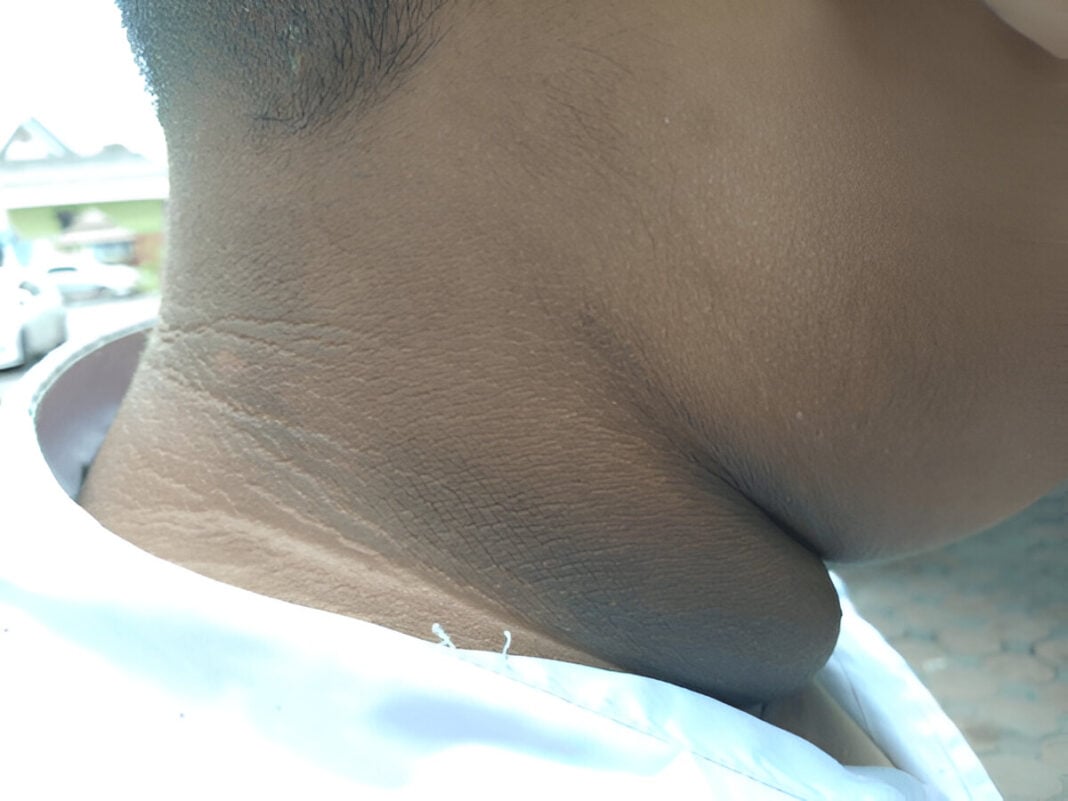Our skin often tells a story before our body speaks up in other ways. While many of us associate skin changes with sun exposure, age, or hormones, there is one telltale sign that can reveal a deeper issue: acanthosis nigricans (AN). It is a condition marked by dark, velvety patches of skin, typically found in areas like the neck, armpits, and groin. Although harmless in itself, AN is often a red flag for insulin resistance, a condition that can quietly lead to type 2 diabetes if left unchecked.
What is Acanthosis Nigricans?
Acanthosis nigricans is not a disease in itself but rather a visible skin manifestation of an underlying metabolic imbalance. It appears as thickened, hyperpigmented (darkened) skin with a texture often compared to velvet or suede. While it does not usually itch or hurt, it can cause cosmetic concern or social embarrassment, especially when it appears on visible areas like the neck or hands.
What is important to understand is that AN is not just about skin. It is a warning signal from your body. One of the most common causes of AN is insulin resistance, a condition where the body’s cells become less responsive to insulin, a hormone crucial for regulating blood sugar levels.
The Link Between Insulin and Skin
To grasp why AN occurs, we need to understand insulin’s broader role. Insulin acts like a key that helps glucose enter our cells to be used for energy. When cells resist insulin, the body compensates by producing more of it, a state known as hyperinsulinemia. Elevated insulin levels can stimulate skin cells, particularly keratinocytes and dermal fibroblasts, to multiply abnormally. This results in the thickening and darkening of the skin we see in AN (Hud & Cohen, 2022).
The skin changes are especially pronounced in body folds where friction and moisture already predispose the skin to irritation. In individuals with darker skin tones, these patches may be more noticeable due to the natural pigment of the skin.
Who is at Risk?
Acanthosis nigricans can affect anyone, but it is more common in people who are:
- Overweight or obese
- Pre-diabetic or diabetic
- Of African, Hispanic, Native American, or South Asian descent
- Living with polycystic ovary syndrome (PCOS), which is often associated with insulin resistance
- Taking certain medications, such as corticosteroids or hormonal therapies
Children and adolescents with AN are particularly at risk of developing type 2 diabetes later in life if the underlying insulin resistance is not addressed (Falkner & Schurman, 2020). This makes early recognition and action all the more critical.
How is it Diagnosed?
Diagnosis of AN is usually clinical, based on the appearance and location of the skin changes. A dermatologist or primary care physician can often recognize it at a glance. However, to identify the underlying cause, blood tests may be ordered to check insulin levels, glucose tolerance, and other markers of metabolic health.
In rare cases, AN can be linked to more serious conditions such as internal malignancies, particularly gastrointestinal cancers. This form of AN tends to appear suddenly and spreads rapidly. It is crucial to rule out such possibilities in older adults or those with unexpected or extensive symptoms.
Treatment: Skin Deep and Beyond
There is no magic cream to make AN disappear overnight, but the key to managing it lies in addressing the root cause, which is insulin resistance. Lifestyle changes are the frontline treatment:
- Weight loss: Losing even 5 to 10 percent of body weight can significantly improve insulin sensitivity and reduce AN (Shah & Jhamb, 2021).
- Diet: Adopting a low-glycemic index diet rich in whole foods and fiber can help regulate insulin levels.
- Exercise: Regular physical activity improves the way the body uses insulin.
- Medication: In some cases, doctors may prescribe insulin-sensitizing medications like metformin.
For cosmetic concerns, dermatologists might recommend topical treatments such as retinoids and exfoliants or laser therapies, although results can vary. Most importantly, educating patients about the significance behind the skin change is empowering and motivates healthier choices.
Acanthosis nigricans may first catch your attention in the mirror, but its roots run deeper. It is your body’s way of tapping you on the shoulder, nudging you to take a closer look at your metabolic health. The good news is that with early detection and lifestyle changes, insulin resistance is manageable and often reversible.
So if you or someone you know is noticing unusual skin darkening, do not just cover it up or dismiss it. Let it be a conversation starter with your healthcare provider. Sometimes, the skin really does know best.
References
- Falkner, B., & Schurman, S. H. (2020). Insulin resistance and obesity in childhood. Current Opinion in Endocrinology, Diabetes and Obesity, 27(1), 14–20. https://doi.org/10.1097/MED.0000000000000510
- Hud, J. A., & Cohen, P. R. (2022). Acanthosis nigricans: Etiology, pathogenesis, and therapeutic options. Journal of the American Academy of Dermatology, 86(3), 607–617. https://doi.org/10.1016/j.jaad.2021.09.003
- Shah, P., & Jhamb, M. (2021). Acanthosis nigricans: A dermatological marker for systemic disease. Indian Journal of Dermatology, 66(1), 12–18. https://doi.org/10.4103/ijd.IJD_561_20











